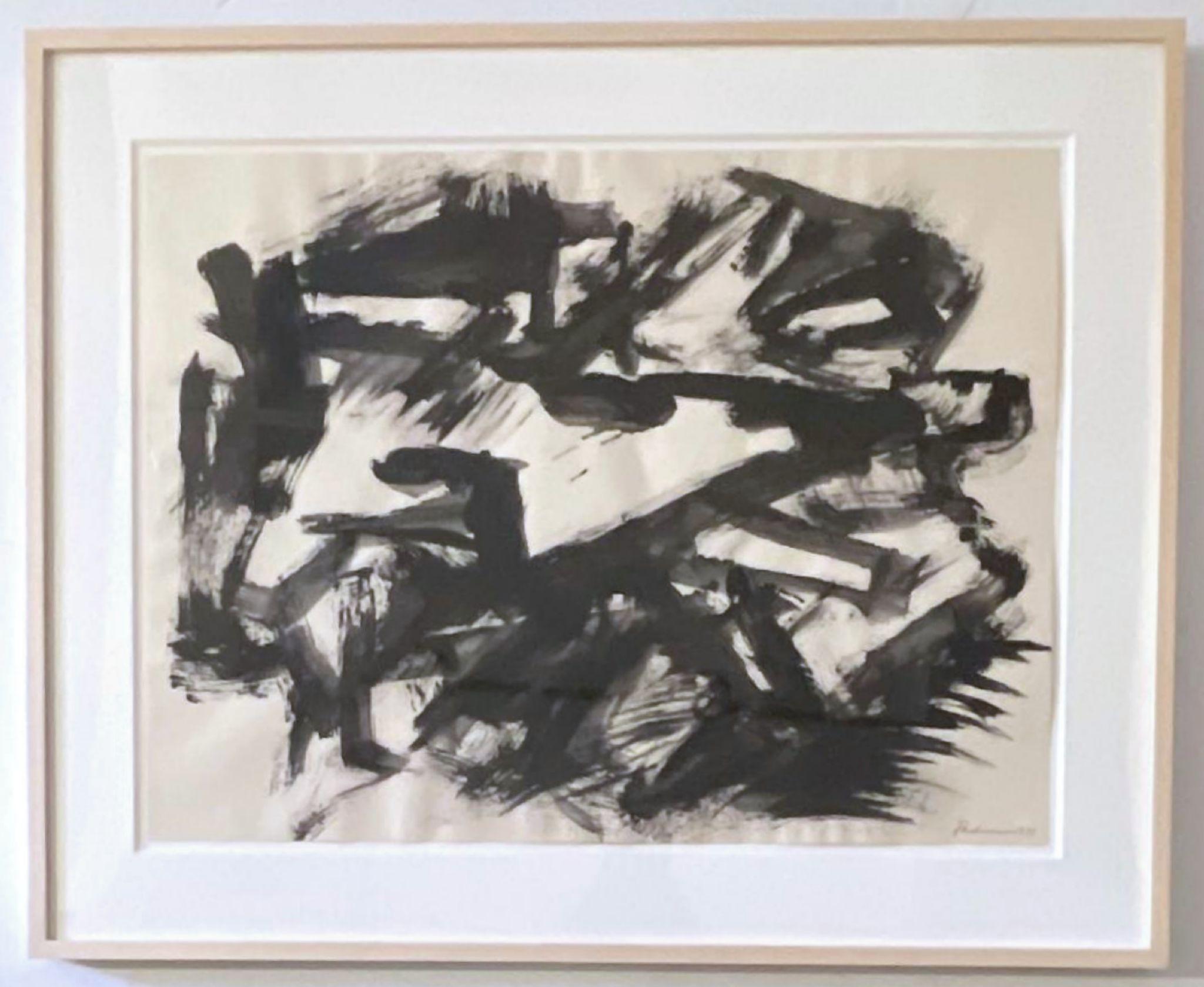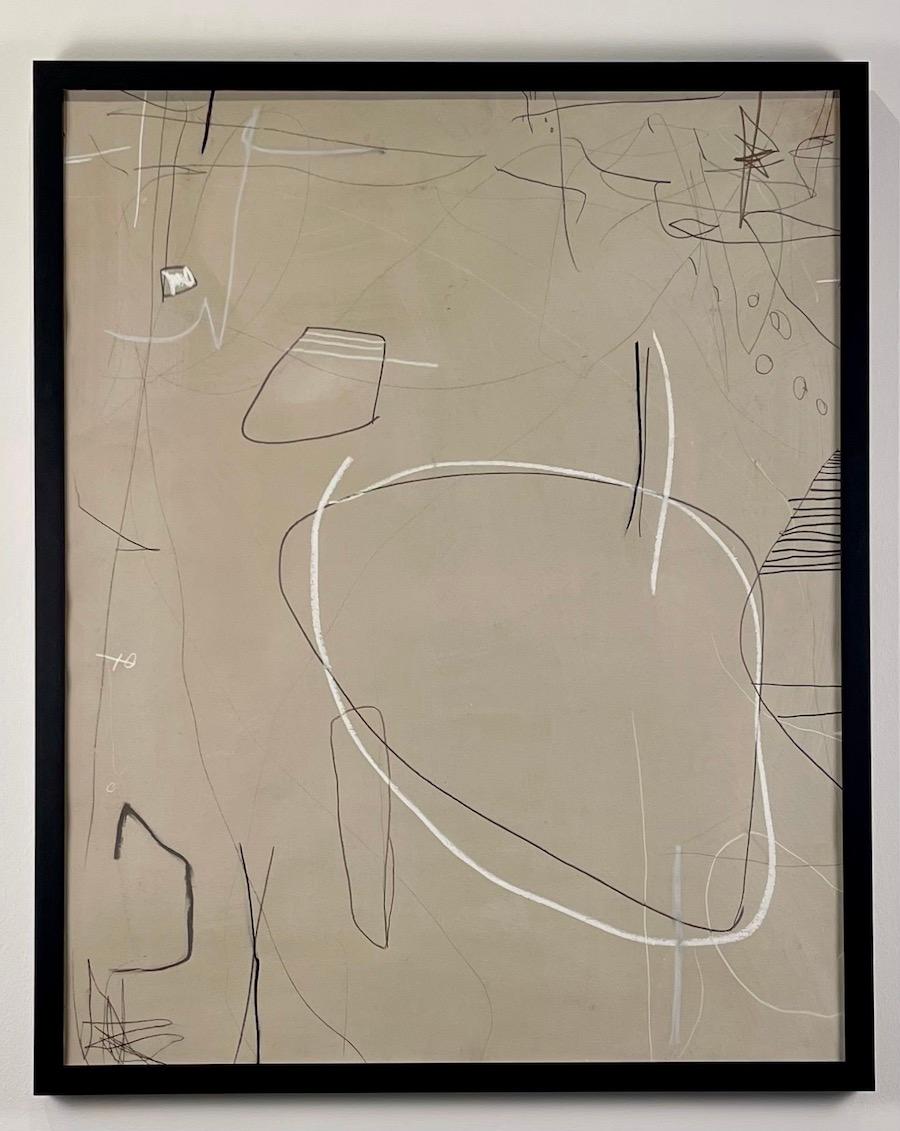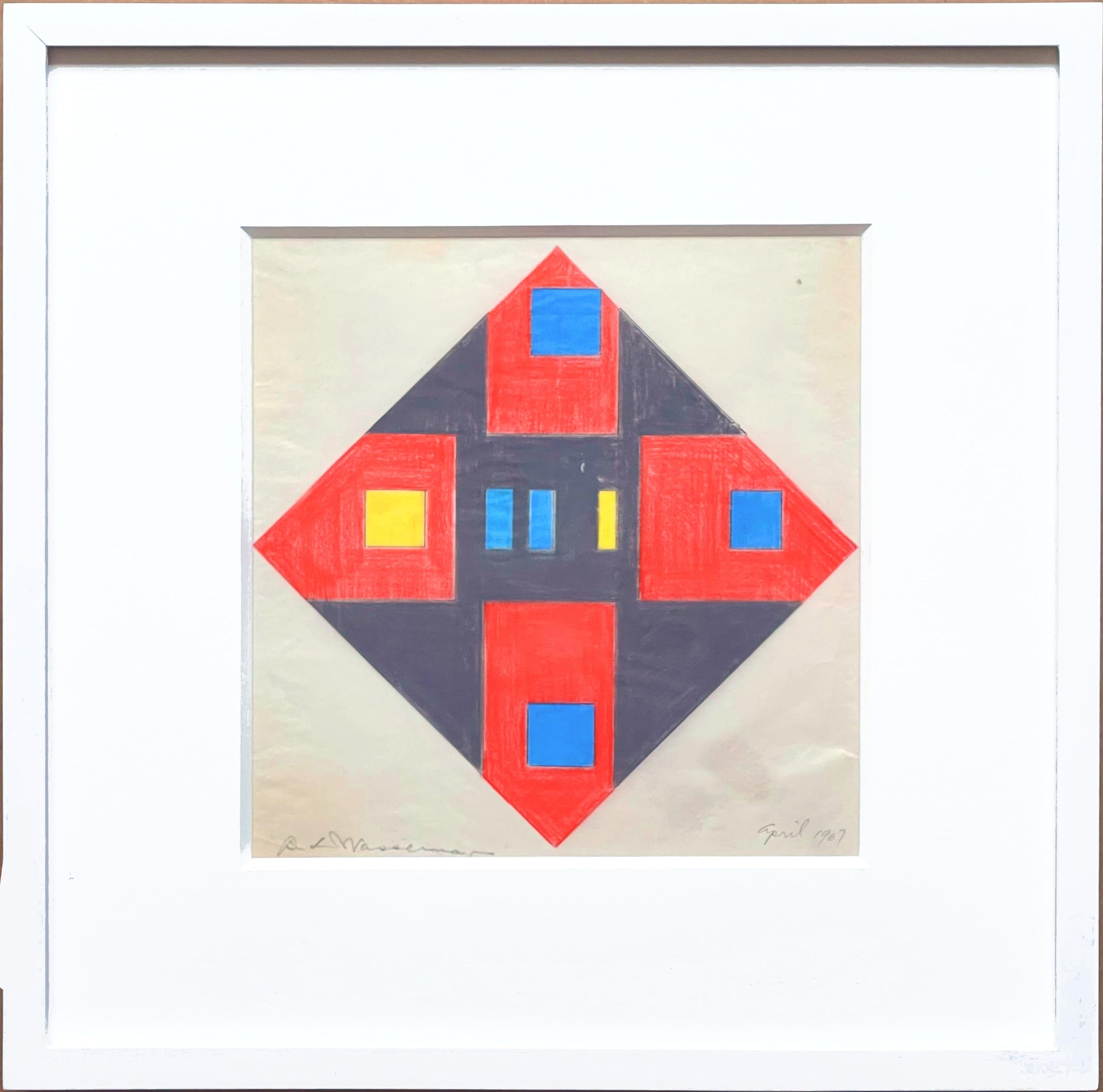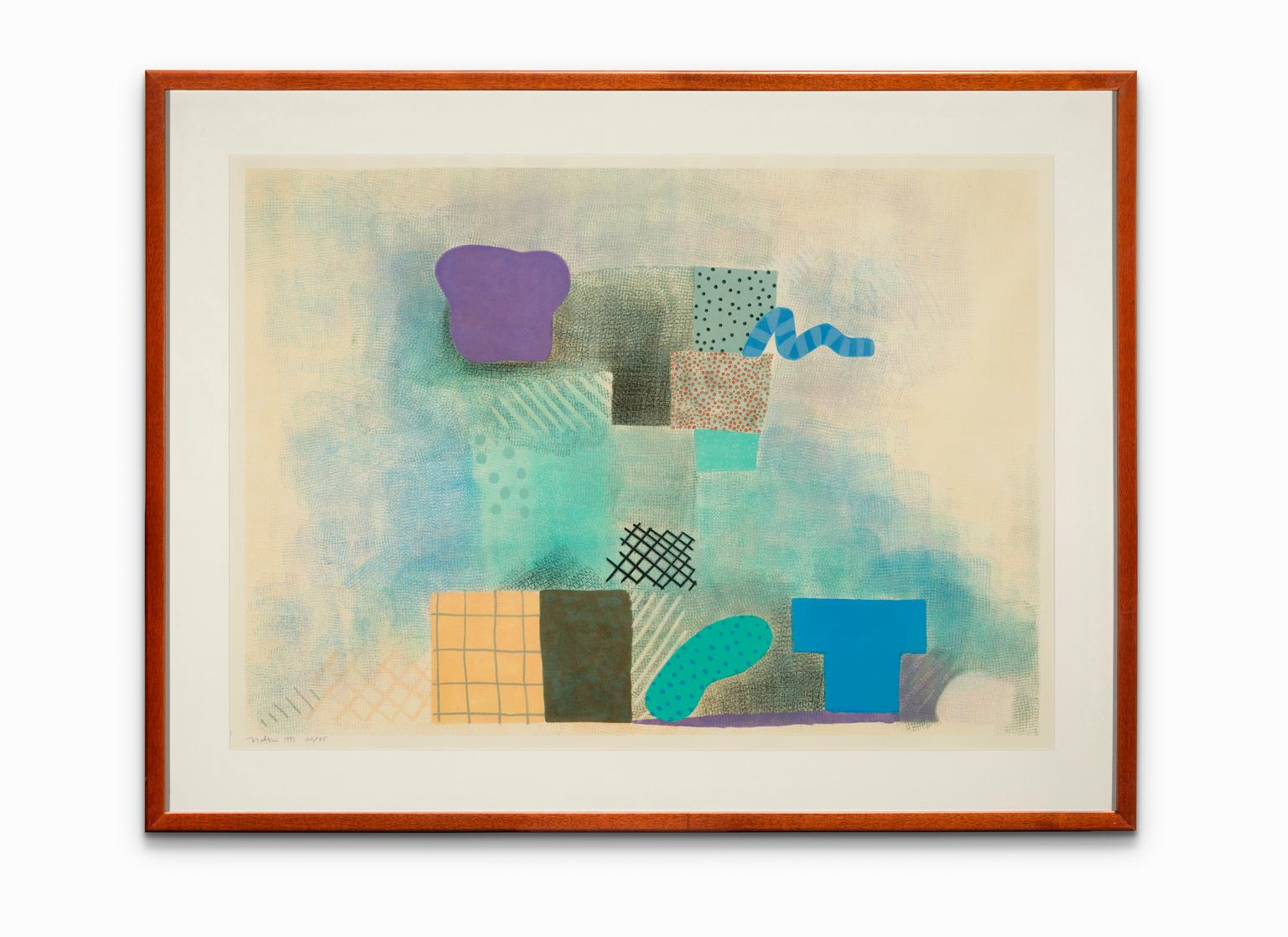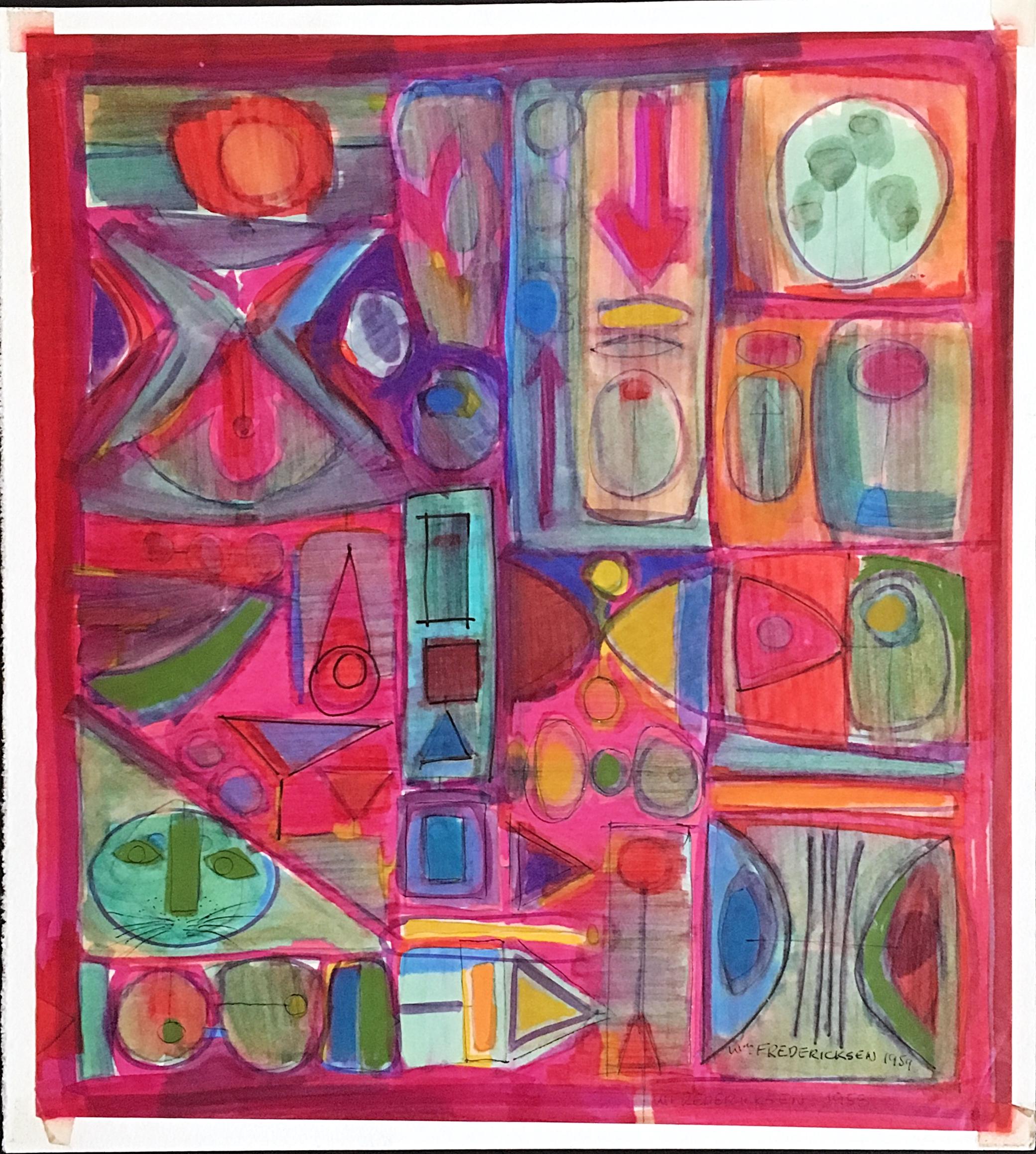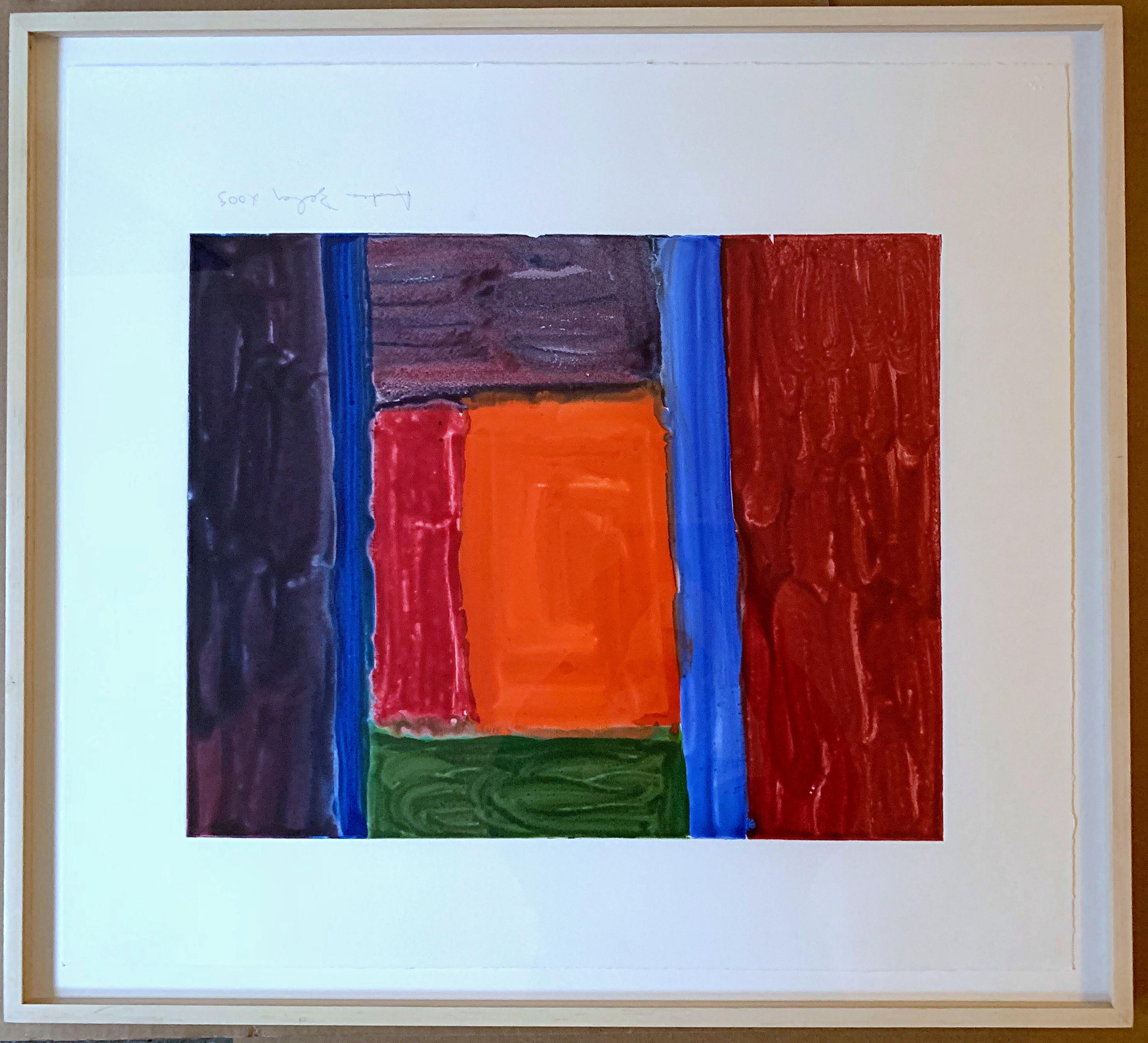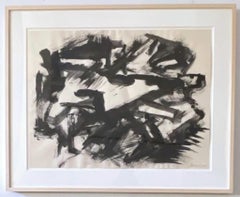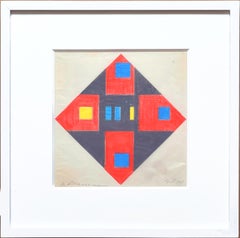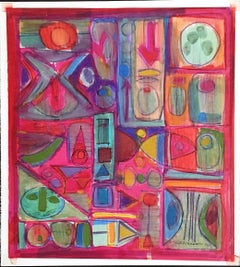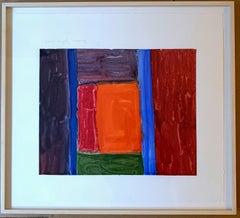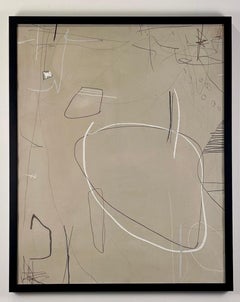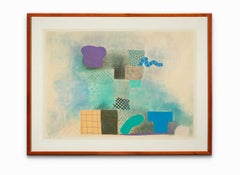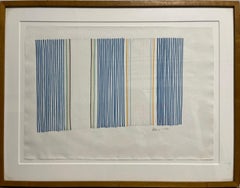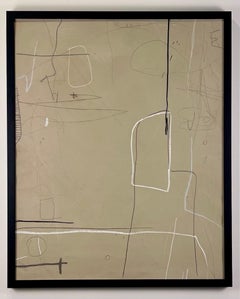Items Similar to Untitled Geometric Abstraction - unique signed and inscribed work -framed
Want more images or videos?
Request additional images or videos from the seller
1 of 8
Paul PagkUntitled Geometric Abstraction - unique signed and inscribed work -framed1989
1989
$3,500
$5,00030% Off
£2,695.99
£3,851.4230% Off
€3,078.51
€4,397.8730% Off
CA$4,992.82
CA$7,132.6130% Off
A$5,461.22
A$7,801.7430% Off
CHF 2,865.91
CHF 4,094.1630% Off
MX$65,313.15
MX$93,304.5030% Off
NOK 36,167.67
NOK 51,668.1030% Off
SEK 33,740.07
SEK 48,200.1030% Off
DKK 22,990.80
DKK 32,84430% Off
About the Item
Paul Pagk
Untitled Geometric Abstraction, 1989
Gouache and watercolor on paper
Signed, dated and inscribed "A Jacqueline".
Frame included
Excellent unique work on paper by contemporary American based European artist Paul Pagk. It was dedicated "A Jacqueline", and elegantly floated and framed in a wooden frame - ready to hang. Acquired from the Estate of art dealer Stephen Long.
Measurements:
Framed: 31 inches by 21 inches
Sheet" 28.5 inches by 18.5 inches
Accompanied by gallery issued Certificate of Guarantee
Paul Pagk short biography:
Paul Pagk (b. 1962, Crawley, UK) lives and works in New York. Institutional surveys of his work were held at the Centre d’Arts Plastiques, Royan (2022), the Fondation Fernet-Branca, Saint-Louis (2021) and C.R.A.C. Montbéliard (1999) all in France. He had solo exhibitions at Miguel Abreu Gallery (2023), Galerie Eric Dupont, Paris (2019, 2016 & 2014), Baukunst Galerie, Cologne (2008), Markus Winter, Berlin (2007), CRG Gallery, New York (1995 & 1994), Thread Waxing Space, New York (1993 & 1991), Galerie Jean Fournier, Paris (1987), among others. Recently, his work was included in Singing in Unison: Artists Need to Create on the Same Scale That Society Has the Capacity to Destroy, Part 6 curated by Phong H. Bui at Miguel Abreu Gallery, New York (2022). Pagk’s work is in the permanent collections of the Fonds National d’Art Contemporain (FNAC), Paris; Les Abattoirs, Toulouse; FRAC Picardie, Franc;, Springfield Museum of Art, OH; Hood Museum of Art, Dartmouth College, NH, among others.
More about Paul Pagk:
Paul Pagk is an abstract painter whose painterly language is one of dualities and discovery. His work invites the viewer to slow down the act of perception, that is to ‘look’, ‘feel’, and perhaps ‘see’. While his compositional style communicates a minimalist approach to form, Pagk plays with the flatness of the picture plane through his use of free hand linework and gestural abstraction, subtle though it may be in places. And yet, it is neither on spatial illusion, nor on process that Pagk insists in his practice. The object that is the painting itself is the form of expression, as are the finely-tuned oppositional forces and personal geometries he creates to relay flattened, deconstructed subjects, each one held in suspension amidst lush fields of singular color.
The pictorial rhythms inherent in Pagk’s paintings and drawings are unmistakable. The artist’s brushstrokes, both broad and finite, have a deliberateness that manifests a fluid mind and breathing hand at work. Like architectural blueprints that have shed their skin and rearranged themselves from within, Pagk’s offbeat graphic compositions are structurally sound, but not in any rigid or mechanical sense. Whatever illusions and sensations his canvases might produce, Pagk’s stated intent is for viewers to “inhabit” his paintings and the spatial constructs therein.
“The care and attention Pagk lavishes on his paintings, his satiny, almost licked surfaces, show an artisanal sense of self-effacing craft; not to the extent of effacing the premise of a maker – Pagk’s surfaces are not the featureless, machine made skins of Minimalism – but only so far as to avoid loading every gesture with the burden of self-expression.
…
There is a stillness and grace to Pagk’s work that seems to owe more to a memory of Greek civilization than to any modern painter.
…
What strikes one most in Pagk’s paintings is the abundance of patience, both the patience of their making and the patience of how they present themselves to us. Like Brice Marden’s monochromes, but in a way all their own, Pagk’s paintings need a good deal of time to achieve their full effect. This willingness to wait, this lack of anxiety about the audience’s attention span, is remarkable in so young a painter. (Possibly it is Pagk’s mixed cultural background, his position as a ‘French’ painter actually English and Czech–transplanted from Paris to New York that helps him take such a long view.)
…
While it is true that [his works] are neither ‘last’ nor ‘first’ paintings, it is equally true that they have their own secrets and that these are well-guarded. Like inscriptions in an ancient language, they seem prepared to wait millennia if necessary before the world takes cognizance of their importance, their hidden wisdom, their arcane knowledge, their complex system of inner harmonies. One knows that, regardless, Paul Pagk will carry on constructing his human-scaled pantheons stroke by stroke, that no matter what, his paintings will continue to emit their quiet glow, like epistemological batteries.”
– Meyer Raphael Rubinstein
Text excerpt from Meyer Raphael Rubinstein, “Paul Pagk: The Survival of Pagan Geometry,” in Paul Pagk, Paintings and Drawings (New York: Thread Waxing Space, 1991).
- Creator:Paul Pagk (1962, American)
- Creation Year:1989
- Dimensions:Height: 28.5 in (72.39 cm)Width: 18.5 in (46.99 cm)
- Medium:
- Movement & Style:
- Period:
- Condition:held in original vintage frame.
- Gallery Location:New York, NY
- Reference Number:1stDibs: LU1745215611882
About the Seller
5.0
Platinum Seller
Premium sellers with a 4.7+ rating and 24-hour response times
Established in 2007
1stDibs seller since 2022
466 sales on 1stDibs
Typical response time: 2 hours
- ShippingRetrieving quote...Shipping from: New York, NY
- Return Policy
More From This Seller
View AllUntitled '71 Abstract Expressionist drawing. Signed by renowned sculptor, Framed
Located in New York, NY
Anthony Padovano
Untitled Abstract Expressionist drawing, 1971
Ink wash on paper drawing
Signed and dated in ink wash
Unique
Original (unique) signed Abstract Expressionist ink wash ...
Category
1970s Abstract Expressionist Abstract Drawings and Watercolors
Materials
Ink
Untitled Mid-Century Modern Geometric Abstraction
Located in New York, NY
Burton Wasserman
Untitled Mid-Century Modern Geometric Abstraction, 1967
Color pencil on thin vellum paper
Hand signed and dated by the artist on the front
Frame Included: elegantly ...
Category
1960s Abstract Geometric Abstract Drawings and Watercolors
Materials
Color Pencil, Vellum
Untitled mid century modern geometric abstraction
By William Fredericksen
Located in New York, NY
William Fredericksen
Untitled mid century modern geometric abstraction, 1958-1959
Watercolor and Gouache on Board
Hand signed and dated on the front
12 4/5 × 11 7/10 inches
Unframed
...
Category
Mid-20th Century Abstract Geometric Abstract Drawings and Watercolors
Materials
Mixed Media, Watercolor, Gouache
Untitled, from the Lehman Brothers Art Collection unique signed framed monotype
By Andrea Belag
Located in New York, NY
Andrea Belag
Untitled, from the Lehman Brothers Art Collection, 2003
Watercolor monotype on paper
Pencil signed and dated on the front
Framed
Gorgeous ...
Category
Early 2000s Abstract Abstract Drawings and Watercolors
Materials
Watercolor, Monotype, Graphite
Geometric Abstraction, Ex-Bank of New York Collection Lithograph SIgned/N Framed
By Piero Dorazio
Located in New York, NY
Piero Dorazio
Abstract Composition (Bank of New York Corporate Collection), 1971
Lithograph on wove paper
Pencil signed, numbered 73/75 and dated on the front. The back bears a label...
Category
1970s Abstract Geometric Abstract Prints
Materials
Lithograph
Herbert Ferber, Abstract Expressionist sculptural study signed framed Provenance
By Herbert Ferber
Located in New York, NY
Herbert Ferber
Untitled, 1968
Unique Ink and color wash on paper
Hand signed and dated by the artist on the front
Framed with original Knoedler Gallery label (under the respected dir...
Category
1960s Abstract Expressionist Abstract Drawings and Watercolors
Materials
Ink, Watercolor
You May Also Like
Untitled #533 by Murray Duncan – Original Contemporary Mixed Media on Paper
Located in Toronto, Ontario
Untitled #533 by Murray Duncan – Contemporary Mixed Media on Paper
Size: 32" x 40"
Unframed, signed on the back
A striking exploration of form and movement, Untitled #527 by Murray ...
Category
21st Century and Contemporary Abstract Geometric Abstract Paintings
Materials
Oil Crayon, Acrylic, Pencil
Robert Natkin Abstract Lithograph Signed Numbered
By Robert Natkin
Located in Detroit, MI
SALE ONE WEEK ONLY
Soft pastel colors in floating smudges lay between and around lyrical abstract geometric and organic forms giving a diaphanous color and shape harmony to the work...
Category
1990s Abstract Expressionist Abstract Prints
Materials
Lithograph
"Untitled" 20th century on paper signed and dated drawing
By Gene Davis
Located in New York, NY
Gene Davis
1920 – active in Washington DC - 1985
Untitled
1981
Colored felt tip on paper
17 ¾ x 12 ½ inches (49 x 32 cm)
Framed dimensions: 24 x 14 inches (61x 35.5 cm)
Signed and ...
Category
1980s Abstract Expressionist Abstract Drawings and Watercolors
Materials
Paper, Felt Pen
Untitled #532 by Murray Duncan – Original Contemporary Mixed Media on Paper
Located in Toronto, Ontario
Untitled #532 by Murray Duncan – Contemporary Mixed Media on Paper
Size: 32" x 40"
Unframed, signed on the back
A striking exploration of form and movement, Untitled #527 by Murray ...
Category
21st Century and Contemporary Abstract Geometric Abstract Paintings
Materials
Oil Crayon, Acrylic, Pencil
Untitled #530 by Murray Duncan – Original Contemporary Mixed Media on Paper
Located in Toronto, Ontario
Untitled #530 by Murray Duncan – Contemporary Mixed Media on Paper
Size: 32" x 40"
Unframed, signed on the back
A striking exploration of form and movement, Untitled #527 by Murray ...
Category
21st Century and Contemporary Abstract Geometric Abstract Paintings
Materials
Oil Crayon, Acrylic, Pencil
Untitled #505, Mixed Media on Paper by Murray Duncan - Abstract Geometric Modern
Located in Toronto, Ontario
Untitled #505 by Murray Duncan, 2024
Mix media on paper
Unframed
Size: 32" x 40"
Murray Duncan Studio:
Murray Duncan, born in 1966, is a self-taught creative visionary celebrated f...
Category
21st Century and Contemporary Abstract Geometric Abstract Paintings
Materials
Glaze, Oil Crayon, Acrylic
